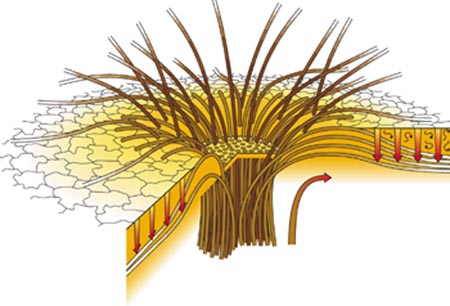New theories have clarified the structure of sunspots but the latest observations have revealed intriguing dark cores in the bright filaments that surround them

Solar physics is currently enjoying a golden age, but many fundamental questions about the nature of the Sun have not yet been fully answered. What generates the Sun’s magnetic field? How is its atmosphere heated? And what governs the acceleration of the solar wind? However, over the past five years there have been significant advances in our understanding of solar magnetohydrodynamics the subtle and intimate nonlinear interaction between the Sun’s magnetic field and the plasma of which the star is composed.
An example of the Sun’s mystique is sunspots, dark regions on the solar surface that are often accompanied by bursts of activity such as solar flares. Sunspots have been observed for over two millennia, varying in number with a period of 11 years, and we have just experienced a maximum in the sunspot cycle. Moreover, there have recently been two important advances in our understanding of these intriguing solar features.
In the February issue of Physics World, Eric Priest from the Mathematics Institute in St Andrews in the UK discusses these important developments in more detail.



